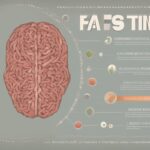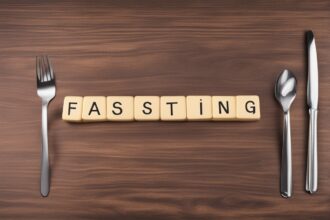Hey there, fasting enthusiasts! If you’re diving into the world of fasting—whether for weight loss, spiritual reasons, or overall wellness—you’ve probably wondered how to do it safely. Fasting can be a powerful tool for improving health, but only if done right. That’s why I’ve put together this ultimate guide on safe fasting tips. We’ll explore everything from preparation to potential risks, blending practical advice with science-backed insights. My goal? To help you fast with confidence, avoiding common pitfalls while maximizing benefits. Let’s get started on this journey to fasting safety!
What Is Fasting, and Why Does Safety Matter?
Fasting, at its core, is voluntarily abstaining from food and sometimes drink for a set period. It’s been practiced for centuries across cultures for religious, therapeutic, or health reasons. Today, intermittent fasting, water fasting, and other methods are trending for their potential benefits like improved metabolism and weight management (Mattson et al., 2017). But here’s the thing—fasting isn’t a one-size-fits-all practice. Without proper precautions, it can lead to dehydration, nutrient deficiencies, or worse. That’s where fasting safety guidelines come in. Prioritizing safety ensures you reap the rewards without compromising your well-being. So, let’s dive into how to make fasting work for you—safely.
Preparing for a Fast: Key Steps for Safety
Preparation is the foundation of a safe fasting experience. Jumping into a fast without a plan is like running a marathon without training—you’re setting yourself up for trouble. Start by consulting a healthcare professional, especially if you have pre-existing conditions like diabetes or heart issues. They can assess whether fasting is suitable for you (Johnstone, 2015). Next, choose a fasting method that aligns with your lifestyle—whether it’s the 16:8 intermittent fasting or a 24-hour water fast. Gradual preparation is key; don’t go from eating three meals a day to zero overnight. Ease into it by reducing portion sizes or cutting out processed foods a few days before. Hydration is non-negotiable—drink plenty of water leading up to your fast to avoid dehydration risks. These safe fasting tips set the stage for a smoother journey.
Essential Safe Fasting Tips During Your Fast
Once you’re in the thick of your fast, staying mindful is crucial. I’ve learned through trial and error that small habits make a big difference in maintaining energy and avoiding discomfort. Here are some practical fasting safety practices to follow:
- Stay hydrated: If your fast allows water, sip it regularly. Dehydration can cause headaches and fatigue (Pross et al., 2014).
- Listen to your body: Feeling dizzy or overly weak? It’s a sign to stop. fasting shouldn’t feel like torture.
- Avoid overexertion: Skip intense workouts during long fasts. Opt for light activities like walking to conserve energy.
- Monitor symptoms: Keep track of how you feel. Persistent nausea or heart palpitations warrant immediate attention.
Remember, fasting is about balance. Pushing yourself too hard can negate any potential benefits, so prioritize these healthy fasting strategies to stay on track.
Breaking Your Fast the Right Way
Breaking a fast might seem like the easy part—just eat, right? Not quite. After hours or days without food, your digestive system needs a gentle reintroduction. Diving into a heavy meal can cause bloating, stomach pain, or even a dangerous condition called refeeding syndrome in extreme cases (Crook et al., 2001). Start with small portions of easily digestible foods like broth, fruit, or yogurt. Avoid sugary or fatty meals that can spike blood sugar or overwhelm your gut. Take it slow—eat mindfully and chew thoroughly. One of my go-to safe fasting tips is to plan your first meal in advance, so you’re not tempted to grab whatever’s closest. This approach to fasting safety guidelines helps your body adjust without shock.
Who Should Avoid Fasting? Understanding Risks
While fasting can be beneficial for many, it’s not for everyone. Certain groups face higher risks and should steer clear unless under strict medical supervision. Pregnant or breastfeeding women, for instance, need consistent nutrition for themselves and their babies. Children and teens are still growing and shouldn’t restrict calories without guidance. People with conditions like type 1 diabetes, eating disorders, or severe kidney issues are also at risk of complications (Trepanowski & Bloomer, 2010). Even if you’re healthy, fasting too frequently or for too long can lead to nutrient deficiencies or hormonal imbalances (Harvie & Howell, 2017). If you’re unsure, err on the side of caution and consult a doctor. These fasting safety practices are all about knowing your limits.
Common Pitfalls and How to Avoid Them
I’ve seen plenty of people (and made a few myself) fall into fasting traps that could’ve been avoided with a little know-how. Let’s break down some common mistakes and pair them with healthy fasting strategies to keep you safe:
- Ignoring hydration: Some think fasting means no water—wrong! Unless it’s a specific dry fast (which isn’t for beginners), drink up.
- fasting too long too soon: Starting with a multi-day fast without experience can tank your energy. Build up gradually.
- Overeating post-fast: It’s tempting to “reward” yourself with a feast, but this can harm your system. Stick to light meals.
- Neglecting electrolytes: Long fasts can deplete sodium and potassium. If allowed, consider a pinch of salt in water or broth.
Avoiding these pitfalls is a cornerstone of safe fasting tips. Fasting isn’t about extremes—it’s about intentional, mindful choices that support your health.
In wrapping up, I want to emphasize that fasting can be a transformative practice when approached with care. By following these safe fasting tips, from thorough preparation to gentle refeeding, you’re setting yourself up for success. Remember, it’s not about how long you fast or how strict you are—it’s about listening to your body and prioritizing safety. Whether you’re a newbie or a seasoned faster, keep these fasting safety guidelines in mind to make the most of your journey. Got questions or personal experiences to share? Drop them below—I’d love to hear how fasting is working for you!
References
- Crook, M. A., Hally, V., & Panteli, J. V. (2001). The importance of the refeeding syndrome. Nutrition, 17(7-8), 632-637. https://doi.org/10.1016/S0899-9007(01)00542-1
- Harvie, M., & Howell, A. (2017). Potential benefits and harms of intermittent energy restriction and intermittent fasting amongst obese, overweight and normal weight subjects—A narrative review of human and animal evidence. Behavioral Sciences, 7(1), 4. https://doi.org/10.3390/bs7010004
- Johnstone, A. (2015). Fasting for weight loss: An effective strategy or latest dieting trend? International Journal of Obesity, 39(5), 727-733. https://doi.org/10.1038/ijo.2014.214
- Mattson, M. P., Longo, V. D., & Harvie, M. (2017). Impact of intermittent fasting on health and disease processes. Ageing Research Reviews, 39, 46-58. https://doi.org/10.1016/j.arr.2016.10.005
- Pross, N., Demazières, A., Girard, N., Barnouin, R., Metzger, D., Klein, A., … & Guelinckx, I. (2014). Effects of changes in water intake on mood of high and low drinkers. PLoS ONE, 9(4), e94754. https://doi.org/10.1371/journal.pone.0094754
- Trepanowski, J. F., & Bloomer, R. J. (2010). The impact of religious fasting on human health. Nutrition Journal, 9, 57. https://doi.org/10.1186/1475-2891-9-57






